Green architecture – Ying Yang House, Venice, California
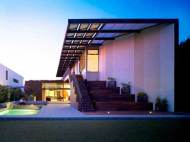 Located in neighborhood with single-family bungalows lined up side by side as if in an a small town, the Ying Yang House stands out as one of the few modern dwellings in Venice, California. This home and office was designed with both passive and active solutions to achieve nearly net-zero energy status, and it provides both open and private areas to a couple of avid entertainers and their growing family.
Located in neighborhood with single-family bungalows lined up side by side as if in an a small town, the Ying Yang House stands out as one of the few modern dwellings in Venice, California. This home and office was designed with both passive and active solutions to achieve nearly net-zero energy status, and it provides both open and private areas to a couple of avid entertainers and their growing family.
Designed by Brooks + Scarpa, the 437-square-meter (4,700 square-foot) home is organized around a series of courtyards and other outdoor spaces that integrate with the interior of the house. After entering an outdoor corridor, it expands into an open living and dining area and a kitchen at the heart of the house. A 10.2-meter-long (33.46-foot-long) glass wall slides open to an adjoining patio and pool, and at the far end a large exterior staircase leads to the second-floor bedrooms.
From the entry courtyard, the entire space to the rear garden wall can be seen – the first clue of the home’s spatial connection between inside and out. These spaces are designed for entertainment, and the 15.24-meter (50-foot) sliding glass door to the living room enhances the harmonic relationship of the main room, allowing the owners to host many guests without the feeling of being overburdened.
The kitchen is the heart of the house, with an open working area that allows the owner, an accomplished chef, to chat with friends while cooking. The family has already hosted a dinner for 200 (the wife is a former professional chef). Because of how the space stretches in either direction, guests naturally gather in groups on the open stairway, drift through the kitchen to the living and dining areas, or mingle by the pool. Even when the house if full of people, it never feels crowded.
Made of Trex – a durable recycled product that resembles wood which actually consists of post-consumer plastic and wood shavings – the stairs are easy to clean and hard to wear out. Privacy can be found in the bedrooms upstairs, but they are purposefully small, designed to accommodate beds and little else.
Recycled and locally procured materials were preferred and used throughout. Interior finishes were selected for their high levels of recycled content, low chemical emissions, and use of rapidly renewable materials. Materials were also selected based on their effect on indoor air quality, long-term maintenance requirements, and durability.
All wood products, cabinets and flooring were made from 100 percent FSC-certified wood. No-VOC paints, sealants and adhesives are used throughout the building and natural stucco pigments were used. Interior finishes are exposed aggregate concrete containing more than 30 percent fly ash, FSC-certified bamboo, 100 percent recycled eco-tile and exterior decking. The structural steel frame, countertops, exterior siding and finishes all included high recycled-content material.
Yin Yang House lies close enough to the Pacific that it benefits from the ocean breezes, and it takes full advantage of cross-ventilation and sunlight from all sides. Air naturally flows though the courtyard before rising to push out any hot, stale air lingering in the bedrooms. Ying Yang Home also includes 100 percent recycled blown-in cellulose insulation, radiant solar hydronic heating in a thermally broken dual-layer concrete slab with 2.5cm (1”) rigid insulation between the slabs.
Large exterior overhangs with metal screens and solar panels function as light filters and shading devices. With nearly half of the building envelope operable glazing, all of the total regularly occupied building area is day lit and can be ventilated with operable windows. All rooms are designed with windows on opposite walls to induce natural cross-ventilation and abundant natural light.
Solar-ventilation chimneys, operable windows and skylights (in bathrooms) eliminate the need for mechanical cooling. Large roof overhangs at the east-, west- and south-facing glazed areas help to control and regulate summer and winter heat gain.
Set back from the sidewalk and defined by a stone garden planted with Mexican feather grass, Caribbean copper plants, and other drought-resistant foliage that requires minimal care, Yin Yang House is designed to capture 95 percent of the stormwater on site. Most of the water is captured by the green roof, moved to a subsurface infiltration system and returned to the groundwater after being cleaned of pollutants.
The system enables nearly all of the storm water to replenish the local groundwater rather than running off, picking up trash, and polluting the ocean. To further reduce the building’s impact on the water cycle, all the water fixtures are low flow, the toilets are dual flush.
In addition to the passive design, the building has no mechanical cooling system. As a result, heating and cooling loads are reduced by over 75 percent. Energy Star appliances, top of the line solar water heaters and energy efficient lighting are also significant sources of savings. Other than the use of natural gas, all of the building’s energy is generated on site with the 12-kW photovoltaic solar system. Aside heating water for domestic use, thermal panels are used to heat the pool.
The solar panels also provide shade from the sun, preventing the house from becoming overheated. The owners have been in the home for over nine months and have yet to receive a power bill.
The building has facilities to sort, collect, and recycle paper, plastic and metal products. Ying Yang House was designed to last 50 years before a major renovation will be required. Mechanical systems, shafts and chases allow for flexibility and adaptability as technology changes over time.

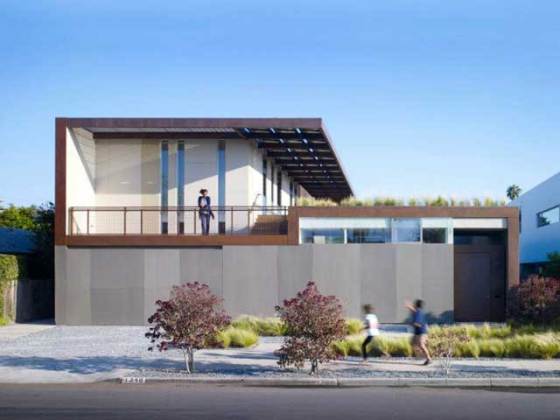
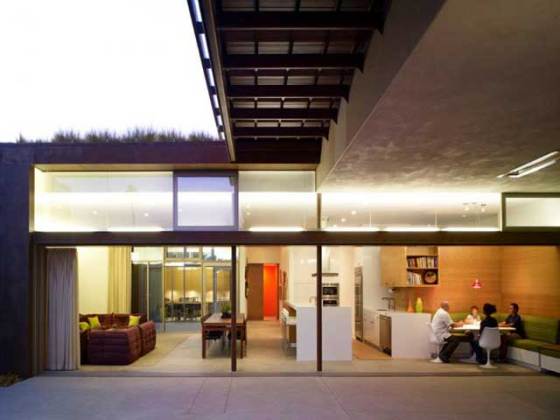
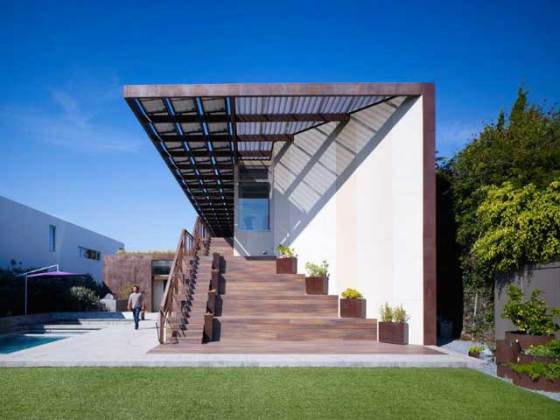
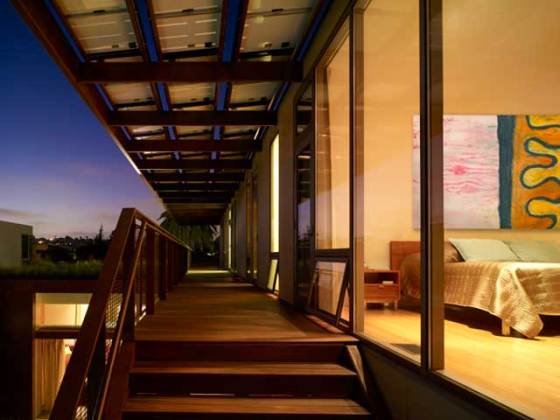
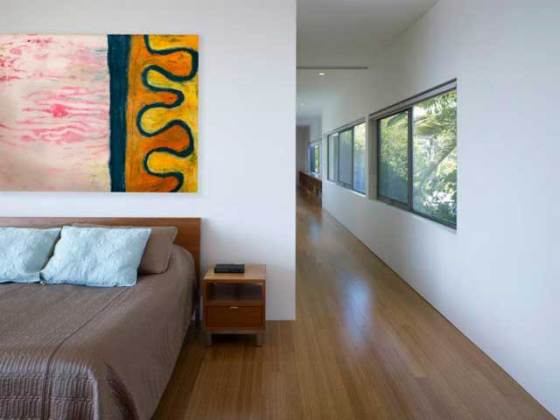
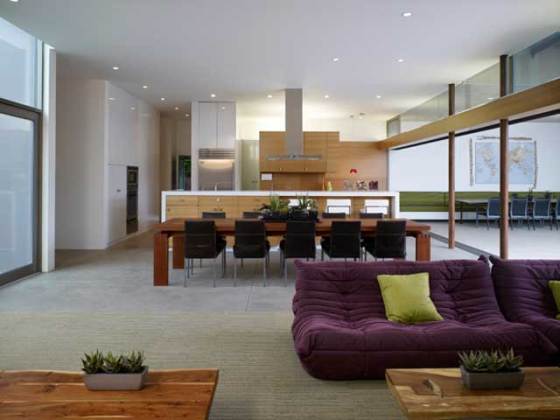








Leave your response!